- Home
- Isaac Hooke
Alien War Trilogy 1: Hoplite Page 8
Alien War Trilogy 1: Hoplite Read online
Page 8
“Have one of the HS3s continue to the top of the rock formation,” Facehopper said. “I want eyes up there. Send the rest inside the cave to explore. Dispatch the Centurions meanwhile to secure the entrance. People, pilot your mechs toward that cave.”
Rade and the others continued their climb. They were about five hundred meters up, by then. He had stopped looking down, as the vertigo was proving too unsettling.
“There goes our way home,” Manic said over the comm.
“What do you mean?” Commander Parnell asked.
“Have a look at the plains,” Manic replied.
Double-checking his grip on the rock face, Rade twisted his torso slightly and glanced over his shoulder. The swarm had swept up the shuttle from the middle of the plains, along with the mech booster payloads farther south, and they carried them off toward the jungle.
“Let’s just hope they don’t destroy the shuttle,” Snakeoil said.
As long as the swarm kept the shuttle intact, Snakeoil and Fret would be able to piggyback off the comm node it contained, and thus communicate with any ships or repeaters in orbit and beyond. But if the hammerheads destroyed the shuttle, the comm node variants Snakeoil and Fret carried weren’t powerful enough by themselves to reach a ship beyond the upper orbit. Unless of course the comm specialists knew the coordinates for a precision burst.
“Snakeoil, advise the fleet that we may lose the shuttle and its comm node,” Facehopper said.
“I’m no longer getting a communications ping,” Snakeoil said. “So I can’t.”
“Keep trying,” the chief said.
“HS3s are reporting an extensive cave system,” Bender said a short while later. “They’ve also found signs of human habitation. But no actual humans so far.”
“Well then,” Fret said. “Looks like we found out where the majority of the John A. McDonald survivors went after their lifepods crashed. Before the local inhabitants had them for dinner, anyway.”
“Send in some of the Centurions to help secure the cave system,” Facehopper said.
“Based on early echolocation readings, it’s fairly big,” Bender returned. “The robots will only map out a quarter of it by the time we arrive.”
“Then secure the outer cave system,” Facehopper transmitted.
The group reached the cave entrance and gathered. It was wide, able to fit seven Hoplites abreast.
As he stood there on the ledge, Rade noticed for the first time how beat up the other mechs were. Like his right arm, many of those limbs jerked badly when moved. Several of the Hoplites limped. The once burnished hulls were covered in dents and gashes, and smeared with alien blood.
“HS3s and Centurions have secured the outer cave system,” Bender announced.
“Snakeoil, I want you to stay here and continue trying to contact the fleet while you stand watch,” the chief said. “Mauler and Grappler, join him. You’re going to act as our sentries. Bender, string out some of the HS3s between us and the entrance to act as repeaters so that we can stay in contact with them at all times. Send the rest deeper into the cave system to explore.” After the ensuing chorus of ‘aye sirs,’ Facehopper finished with: “Headlamps on, people. We’re going inside.”
Rade gazed at the plain below one last time and saw that the last of the aliens were retreating into the jungle. He zoomed in on them and picked out one of the ugly creatures: like him, it was looking back. The creature abruptly turned around and dived into the jungle.
In the distance Rade discerned more meteorites in the sky. Fearing the worst, he zoomed in: he recognized the distinctive outlines of starships burning up.
“See something, Rage?” Tahoe asked.
Rade shook his head. He decided not to tell the others. He hoped at least some of the fleet would survive up there, because like Commander Parnell had said, without them there was no going home.
Heavy-hearted, Rade took his place near the center of the platoon and proceeded into the cave.
ten
The tunnel soon narrowed, and the mechs were forced to march in five rows of three abreast.
Though Rade advanced at a crouch, the upper portion of his mech still scraped the roof. The cone of his headlamp illuminated the weathered black rock beside him, along with the rank of Hoplites immediately in front. A strata of brown and red ran through the rock in some areas, providing some variety to the dark monotony.
Rade kept the forward camera feed of the mech on point piped into a corner of his HUD, which allowed him to see past the Hoplites blocking his vision; nonetheless, there wasn’t much for him to witness up there, as the light cones of the lead mechs illuminated only more of the seemingly endless rock.
“At this rate, we’re going to have to abandon our Hoplites,” Manic said as the cave tightened once more.
“I’d rather not,” TJ said. “If I have to crawl forward on the hands and knees of my Hoplite, I’ll do so before I give up my mech.”
“You and me both, brother,” Bender agreed.
“Well, look on the bright side,” Lui said. “At least we’re not operating ATLAS units. We’d be on our hands and knees already if that were the case.”
They arrived at a portion of the tunnel that looked like it had collapsed at one point, though someone—or something—had dug it out. Piles of smaller rocks littered the floor near the edges of the cave-in, though further in those piles rose to block the entire lower half of the tunnel, reaching to the waistlines of the mechs. A choke point.
“A partial collapse?” Bomb said.
“Seems too convenient,” Manic said. “More likely the survivors dug out the cave so they could set up their base deeper inside.”
“Doubt it,” Fret said. “More like the survivors triggered the cave-in to keep the aliens out.”
“And failed,” Skullcracker said.
“We’ll have to crawl through,” Facehopper said. “Though according to the data returned by the Centurions, it gets nice and wide after this. So in theory, you can keep your mechs. But let’s just hope that none of us gets stuck in there. Any volunteers to lead the way?”
“All right,” Tahoe said, stepping forward. “Let’s do this.” He rotated cobras into either arm. “If I get stuck, I’m going to be melting myself some rocks.”
Rade waited for his turn to come and then he advanced on hands and knees, eventually switching to a crawl. He shot his arms forward, pulling with them, while he pushed with his legs. The tunnel roof scraped against the topside of his mech, while the walls on either side pressed into his flanks. The rocks underneath him varied in size from that of sedimentary grains all the way up to human heads; the material flowed loosely, and at times he had difficulty finding purchase. At other times, the passage of the mechs before him caused the rocks to shift into the unpassable, and he had to dislodge several of them before continuing. He used his cobras to dissolve the more stubborn blockages.
He crawled onward like that for at least two minutes.
“Sheesh,” Bomb said at some point. “Whoever dug this out sure was persistent.”
“My claustrophobia is acting up,” Manic said.
“It’s acting up for all of us,” Rade said. “Work through it.”
“Yes, boss,” Manic replied.
Rade definitely was feeling a bit claustrophobic himself, but he forced himself onward. He remembered a story Tahoe had told him once about alien insects following him and then crawling all over his body when he was in a similar situation, and Rade shuddered at the thought. It certainly felt like there was something following him, though he knew it was only a figment of his imagination.
He nervously glanced at his HUD. Skullcracker was just behind him. He felt better all ready. There was no one he would have rather had bringing up the rear. Except Tahoe, maybe. Too bad he was on point.
“I just lost reception with the comm node in the Dragonfly,” Snakeoil said. According to the overhead map, he was still at his post near the cave entrance. “Looks like we won’t be communica
ting with the fleet for a while.”
“Assuming they’ve left orbit,” Manic said.
“As I mentioned earlier, I stopped receiving replies to my pings a while ago,” Snakeoil said. “So that’s a good assumption.”
“Oh, they’ve left I’m sure,” Fret transmitted. “And they’re probably never coming back.”
“Fret, enough,” the chief’s scolding voice came over the comm.
Rade abruptly slipped through an opening, sliding down a sloping pile of rocks. He rolled away to let the next mech through, and was relieved when he could stand to his full height. He resided in a cavern of some sort. Two Centurions acting as sentries by the entrance greeted him.
Rade stepped forward to survey the area. Geodesic domes were scattered along the floor, though ragged holes had been poked into the fabric of all of them. He spotted punctured tanks and vats beside them—any gases or liquids they had contained had long since evaporated. In one of the domes, whose outer layer had been ripped away entirely, he saw shriveled, dead plants. Four other combat robots stood watch at different points throughout the cavern.
“So what are we looking at?” Commander Parnell transmitted.
One of the combat robots by the entrance answered him. A Praetor unit. “Hydroponic and berthing domes. Plus the oxygen extractors and water reclaimers to support them.”
“The survivors managed to bring a few 3D printers down with them it looks like,” Vicks commented from Rade’s passenger seat.
“Have we found any bodies yet?” Parnell asked the robot.
“Negative, sir,” the Praetor said. “Neither human, nor alien. Exploration of the inner portion of the cave system is ongoing, however. I have dedicated a squad of HS3s and Centurions to the task. Would you like me to recall them?”
“No,” the commander said. “Keep them out there. I want the cave system mapped out in its entirety ASAP.”
Rade checked his overhead map, and sure enough he saw the farthest tunnel segments continually expanding as the scout units proceeded deeper.
“And if we encounter hostiles?” the Praetor asked.
“If you encounter hostiles, withdraw immediately without engaging,” Commander Parnell said. “That’ll be your standing order from now on.”
“Aye, sir,” the Praetor replied.
Rade heard the clank of metal coming from his passenger area.
“Let me down, Mr. Galaal,” Vicks said. “I want to collect some samples of alien blood from your mechs.”
“If you wouldn’t mind, call me Rage, ma’am,” he told her. “It’s my callsign.”
“I prefer Mr. Galaal,” she said.
Rade suppressed a sigh, and he knelt the mech so she could climb down.
When she was on the floor, Vicks retrieved some sort of swab from the kit she carried in her utility belt, and she swiped it over an area on his torso. “I should have done this earlier, before anyone navigated that cave-in.”
“Why, you’re not finding any blood?” he asked.
“Most of it has been scraped off, yes,” she said.
Lieutenant Vicks moved from mech to mech, seeming like a small child beside the three-meter tall Hoplites. She finally found an ample quantity of blood on Skullcracker’s mech.
“That’s Skullcracker for you,” Manic joked. “Always steeped in the blood of his enemies.”
“I wouldn’t have it any other way,” Skullcracker said.
“Should I tell the tale of how I found you all those years ago?” Manic asked. “For the newcomers on the team? The story of your callsign?”
“Probably not,” Skullcracker said.
“I’m going to tell them,” Manic stated emphatically.
“Later, Manic,” Facehopper said.
“Wait a second,” Bomb said. “That blood she’s collecting... shouldn’t it have boiled away by now in this atmosphere?”
“Boiled away?” Vicks said. “The atmospheric pressure isn’t that low, I’m afraid.”
“But it’s low enough,” Bomb argued. “Human blood would evaporate in half the time here.”
“You’re wrong, actually,” Vicks said. “The pressure is only a little lower than Earth’s atmosphere. And besides, this isn’t human blood.”
“Chief,” TJ said. “George is telling me it found some holographic drives in a cave chamber not far from this one. They’re all smashed though, and George is convinced the data is unrecoverable. I’d like permission to check it out anyway.”
“Who’s George?” Commander Parnell asked.
“One of the Centurions,” TJ said, his voice sounding a bit sheepish. “Unit G.”
Manic turned his mech toward the commander and explained: “Our drone operators like to name them. Kinda like pets.”
“I see...” Parnell’s expression seemed somewhat amused behind his faceplate.
“Go ahead, TJ,” Facehopper said. “But take Keelhaul with you.”
“Aye, Chief.”
Facehopper’s mech turned toward Parnell. “Assuming that’s okay with you, Commander?”
The commander inclined his head in consent.
“How much oxygen do your mechs have remaining?” Parnell asked when TJ and Keelhaul were gone.
“About five days worth,” Facehopper answered.
“The lieutenant and I only carry two days worth,” Parnell said.
Facehopper’s Hoplite bobbed up and down, which Rade interpreted as a nod. “Our first priority should be to get these oxygen extractors back online so we can replenish our supplies. We could be down here for quite some time. Bender and Tahoe, you’re the most qualified to work on those extractors. Get on them immediately. Harlequin, you help them—I’m sure your AI brain has a database containing thousands of extractor schematics.”
“I have the same database Bender and Tahoe possess in their Implants,” the Artificial said. “Nonetheless I will do my best to help them.”
“The rest of you,” Facehopper continued. “Split up and rummage through these domes. Let me know if you find anything the robos missed. A few battery packs for the suits of the commander and his chief scientist would be great. Otherwise we’ll have to let the two of them take a turn in the Hoplites to recharge via our atomic reactors.”
“My jumpsuit needs to recharge, too,” Harlequin said.
Facehopper ignored the Artificial and turned toward Vicks, who sat crossed-legged in her environmental suit on the cavern floor, swiping her hands across a display screen only she could see. “Lieutenant, update us as soon as you’ve finished analyzing the blood. Then I want you to help Bender, Tahoe and Harlequin with the extractors.”
“I can update you now,” she said.
“All right...” the chief told her.
“This blood is certainly interesting,” Vicks said. “The things that attacked us definitely aren’t natural, or even native to the planet. I wouldn’t even call them aliens. But rather, mutants.”
“What are you saying?” Commander Parnell asked.
“They’re bioengineered from Terran species,” she replied.
“Terran?” Parnell said. “Are you sure?”
“Unfortunately, yes,” she answered. “The DNA has several base pairs that match up to species from Earth, lumped together in long sequences by animal. Snake, alligator, shark, even human nucleotides are in the make-up. There are several insect genes, too, notably scorpion. Just a hodgepodge of characteristics borrowed from the genetic spectrum of Earth’s phyla. I believe the base animal they started with was the chicken, however.”
“The chicken?” Commander Parnell said, the disbelief evident in his voice. “We were attacked by big chickens.”
Vicks looked up from where she sat. “The chicken is a descendant of the Tyrannosaurus Rex. It would make sense to use the DNA of the bird as a starting point, activating various genes to express characteristics of its ancestor. The clawed hands. The large tail. The extensive jaw. The massive size. Once they had reverted the animal, it was simply a matter of splicing
in genes from other species to get the genetically engineered animal they desired, one that could breathe the harsh atmosphere of the planet. A weapon of war.”
“Who is this ‘they’ you’re talking about?” Parnell said. “The creators of this bio-weapon. You mean the aliens who attacked the John A. McDonald?”
“Possibly,” the lieutenant replied. “Someone used the DNA of the human survivors, and that of their food sources, to bioengineer the creatures that attacked us. Either the aliens that attacked the John A. McDonald did it, or the scientists who survived the attack themselves.”
“Why would the scientists create them?” Grappler asked. He was obviously listening in from his faraway sentry post at the cave entrance.
“Perhaps to protect themselves from the other native animals of the planet,” Vicks explained. “Or from the aliens who attacked their ship in orbit. It’s possible their plan backfired, however, and they lost control of their own creations. The creatures turned on them.”
“Wait a second,” Lui said. “I highly doubt the survivors had any bioengineering experts among them. And gene splicing equipment, plus the incubation chambers that go with them, are fairly specific. Very few starships have the necessary infrastructure aboard. It’s not something you can simply jury-rig from a 3D printer and a geodesic dome. And you say DNA from the food sources was used? I don’t think the survivors had any shark, snake, or alligator meat in their ration packs. Nor any scorpions. But they would have had chicken, I’ll give you that.”
“The survivors could have easily retrieved the base pair information from the database,” Vicks said. “Though I’ll agree, it was doubtful they had the necessary equipment to splice and incubate the bioengineered creatures.”
“I’ll tell you all what we’re facing here,” Lui said. “These hammerhead things weren’t manufactured by the survivors of the John A. McDonald. Oh no. These kind of bio-weapons are the specialty of the Sino-Koreans.”
Commander Parnell glanced at Lui’s Hoplite. “You think the Sino-Koreans, or one of their factions, attacked the John A. McDonald?”
“That’s exactly what I think,” Lui said. “I’m willing to bet the other herds of animals we detected from orbit are also based on DNA from Earth phyla. And the plants? Probably genetically modified as well. That dodecahedron ship must be some new prototype of theirs. The secondary Slipstream in this system probably loops back to SK space. See, I’m willing to bet the SKs were using this planet as a breeding ground for organic weapons. At least until we showed up with our Builders and the John A McDonald to crash the party. Something they weren’t too pleased about.”

 Warden 2
Warden 2 Devastator
Devastator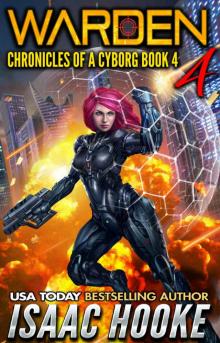 Warden 4
Warden 4 Emperor
Emperor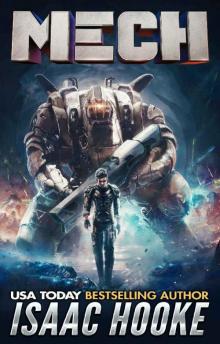 Mech
Mech Conqueror
Conqueror Fighter
Fighter The Forever Gate Ultimate Edition
The Forever Gate Ultimate Edition Defiler
Defiler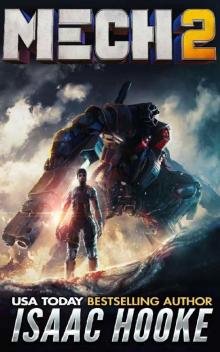 Mech 2
Mech 2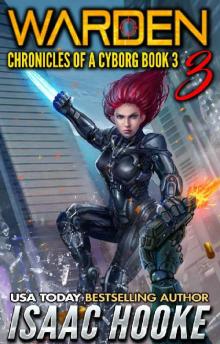 Warden 3
Warden 3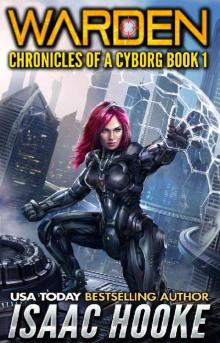 Warden 1
Warden 1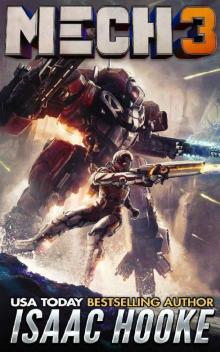 Mech 3
Mech 3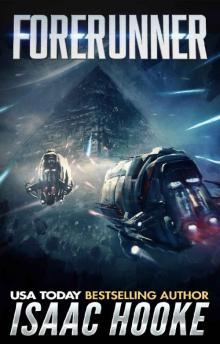 Forerunner
Forerunner The Alliance (AI Empire Book 2)
The Alliance (AI Empire Book 2) Breaker (Monster Tamer Book 1)
Breaker (Monster Tamer Book 1) Bender of Worlds
Bender of Worlds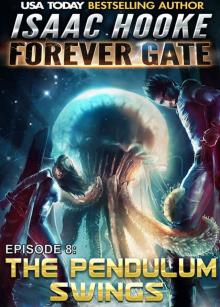 The Pendulum Swings (The Forever Gate Book 8)
The Pendulum Swings (The Forever Gate Book 8) The Link
The Link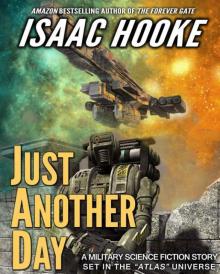 Just Another Day
Just Another Day Star Warrior
Star Warrior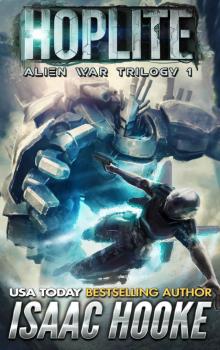 Alien War Trilogy 1: Hoplite
Alien War Trilogy 1: Hoplite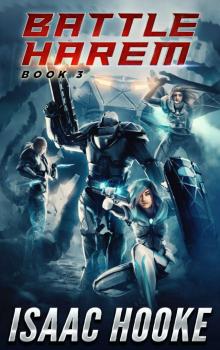 Battle Harem 3
Battle Harem 3 The Ethan Galaal Series: Books 1 - 3
The Ethan Galaal Series: Books 1 - 3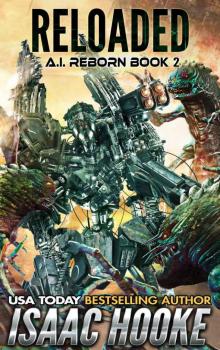 Reloaded
Reloaded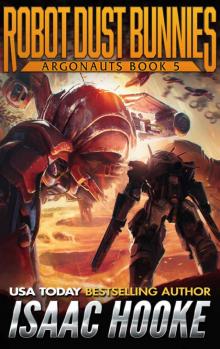 Robot Dust Bunnies (Argonauts Book 5)
Robot Dust Bunnies (Argonauts Book 5) Battle Harem
Battle Harem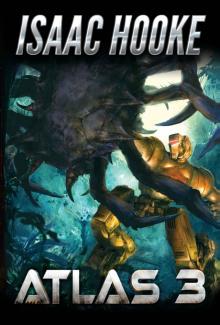 ATLAS 3 (ATLAS Series Book 3)
ATLAS 3 (ATLAS Series Book 3) Argonauts 2: You Are Prey
Argonauts 2: You Are Prey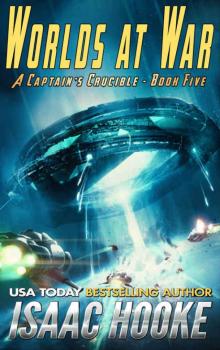 Worlds at War (A Captain's Crucible Book 5)
Worlds at War (A Captain's Crucible Book 5)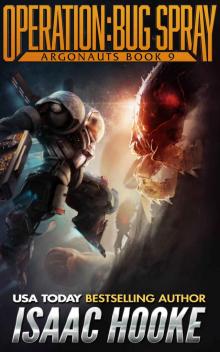 Operation: Bug Spray (Argonauts Book 9)
Operation: Bug Spray (Argonauts Book 9)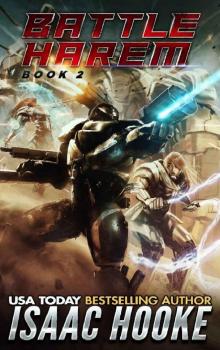 Battle Harem 2
Battle Harem 2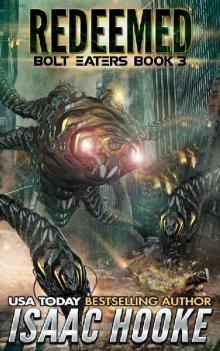 Redeemed (Bolt Eaters Trilogy Book 3)
Redeemed (Bolt Eaters Trilogy Book 3) Atlas
Atlas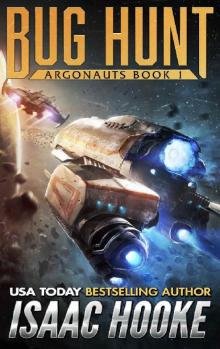 Argonauts 1: Bug Hunt
Argonauts 1: Bug Hunt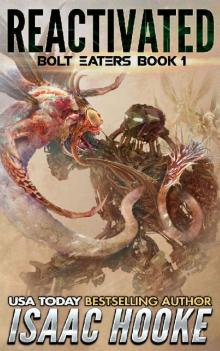 Reactivated (Bolt Eaters Trilogy Book 1)
Reactivated (Bolt Eaters Trilogy Book 1)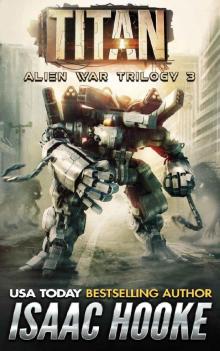 Alien War Trilogy 3: Titan
Alien War Trilogy 3: Titan Flagship (A Captain's Crucible #1)
Flagship (A Captain's Crucible #1)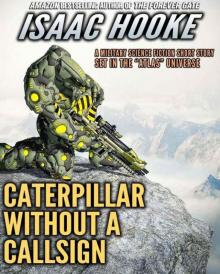 Caterpillar Without A Callsign
Caterpillar Without A Callsign The Forever Gate
The Forever Gate He Who Crosses Death (Star Warrior Quadrilogy Book 3)
He Who Crosses Death (Star Warrior Quadrilogy Book 3)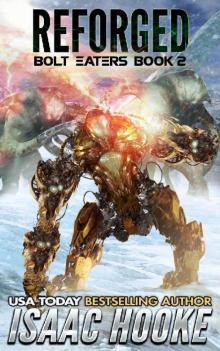 Reforged (Bolt Eaters Trilogy Book 2)
Reforged (Bolt Eaters Trilogy Book 2)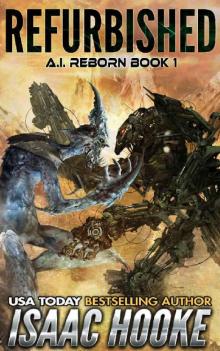 Refurbished
Refurbished Reloaded (AI Reborn Trilogy Book 2)
Reloaded (AI Reborn Trilogy Book 2) He Who Crosses Death
He Who Crosses Death Explorations: First Contact
Explorations: First Contact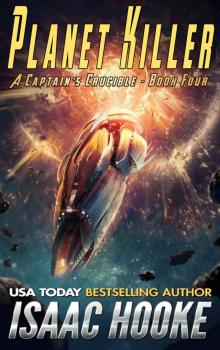 Planet Killer (A Captain's Crucible Book 4)
Planet Killer (A Captain's Crucible Book 4)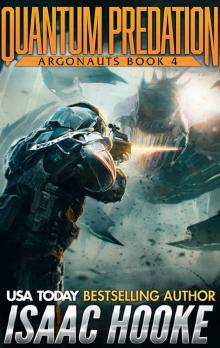 Quantum Predation (Argonauts Book 4)
Quantum Predation (Argonauts Book 4) Clandestine-IsaacHooke-FreeFollowup
Clandestine-IsaacHooke-FreeFollowup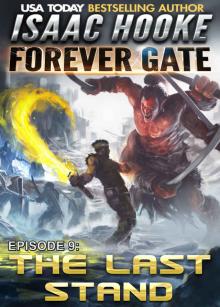 The Last Stand (The Forever Gate Book 9)
The Last Stand (The Forever Gate Book 9)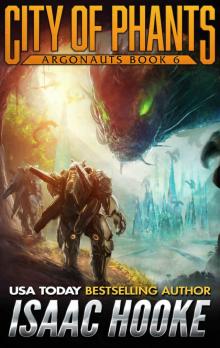 City of Phants (Argonauts Book 6)
City of Phants (Argonauts Book 6)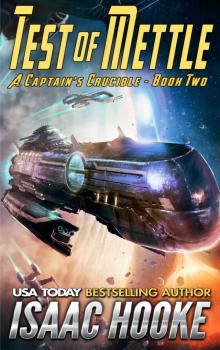 Test of Mettle (A Captain's Crucible Book 2)
Test of Mettle (A Captain's Crucible Book 2)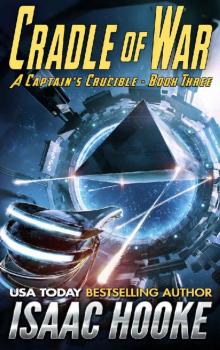 Cradle of War (A Captain's Crucible Book 3)
Cradle of War (A Captain's Crucible Book 3) Rade's Fury (Argonauts Book 7)
Rade's Fury (Argonauts Book 7) Rebirth (The Forever Gate Book 6)
Rebirth (The Forever Gate Book 6) The Forever Gate Compendium Edition
The Forever Gate Compendium Edition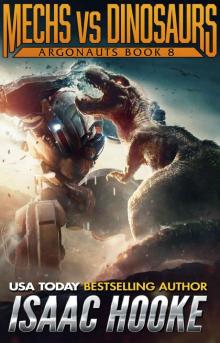 Mechs vs. Dinosaurs (Argonauts Book 8)
Mechs vs. Dinosaurs (Argonauts Book 8)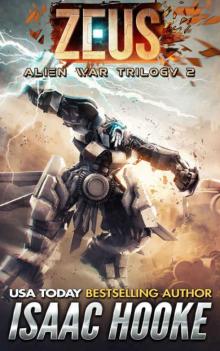 Alien War Trilogy 2: Zeus
Alien War Trilogy 2: Zeus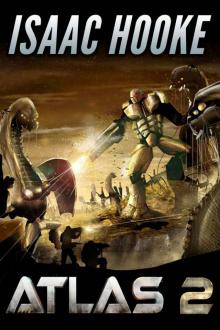 ATLAS 2 (ATLAS Series Book 2)
ATLAS 2 (ATLAS Series Book 2)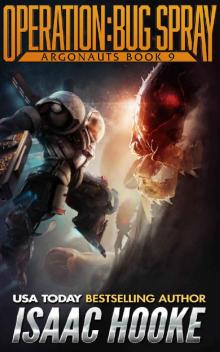 Operation_Bug Spray
Operation_Bug Spray